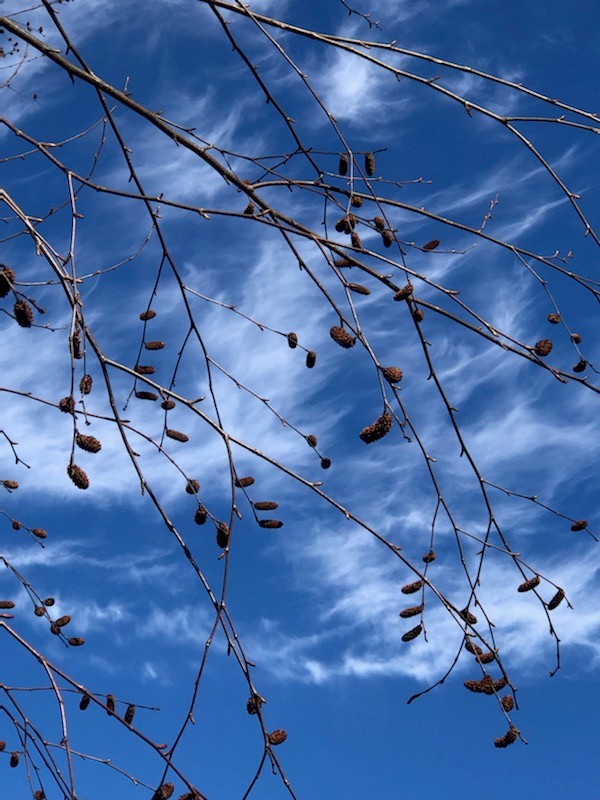By, Susan Sprout
I love trees, especially this time of year, when leafless. They stand out so stark and sturdy against the sky. Sometimes, as a game, I try to identify trees by their silhouettes as we pass them by in the car. I look for hints of seeds, cones, leftover flower spikes, branch configuration.
There was no drive-by the day my cousin and I found this lovely mystery tree as we hiked Chad’s Trail at Glacial Pools. The sky was just perfect, a blue backdrop interrupted by wisps of cirrus clouds. We had to check the clues.
Clue #1 Little cone-like strobiles that hold samaras or double-winged seeds, oblong, 3/4 to 1 1/2 inches long, brownish, disintegrating.

Clue #2 The bark – shiny, dark and smooth, not papery and peeling. Many horizontal lines crossing the trunk – lenticels – corky pores through the bark that provide direct air exchange with the tree’s internal tissues.

Clue #3 The twigs – dark brown, slender, hairless. Snap a twig and sniff the broken end. Ah, the odor of wintergreen!
Perfect! Sweet Birch, Black Birch, Cherry Birch, Betula lenta.
Sweet Birch, a native to Eastern North America, ranges from Canada to the mountains of Georgia and Alabama. A USDA Forest Survey indicates that it is most abundant in Massachusetts, Connecticut, New York, and Pennsylvania. It is one of the species that has replaced American Chestnut where it used to grow. Considered a pioneer species, it tends to grow quickly when young and can grow from stump sprouts if the main trunk is cut or dies. The shiny, smooth bark will become rough and in vertical flat plates as it ages and will continue a pattern of split, peel, and replace throughout the rest of its life which could be up to two hundred years! You can find them growing in cool, moist uplands with hardwoods and conifers. They like the moist , well-drained soil of stream banks as well as dry, rocky soil of ledges.
It used to take one hundred saplings and trees to manufacture just one quart of Birch oil, also called oil of wintergreen. Now chemically produced methyl salicylate is used to flavor things like medicines, candy and ice cream. Plus, you don’t have to tap the trees anymore to make Birch Beer. I like chewing on a twig as I hike along to allay my thirst. Ha. I just like the flavor!


